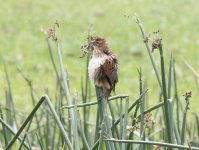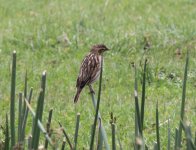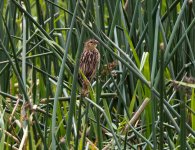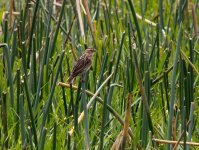I have a tough time with these little guys in non-breeding plumage. I'm thinking bishop (Northern Red), but I'm not sure. Any thoughts? There were about 10-15 of them all together. Thanks in advance!
-
Welcome to BirdForum, the internet's largest birding community with thousands of members from all over the world. The forums are dedicated to wild birds, birding, binoculars and equipment and all that goes with it.
Please register for an account to take part in the discussions in the forum, post your pictures in the gallery and more.
Ethiopia: Bishop? two weeks ago (1 Viewer)
- Thread starter jstanleyg
- Start date







